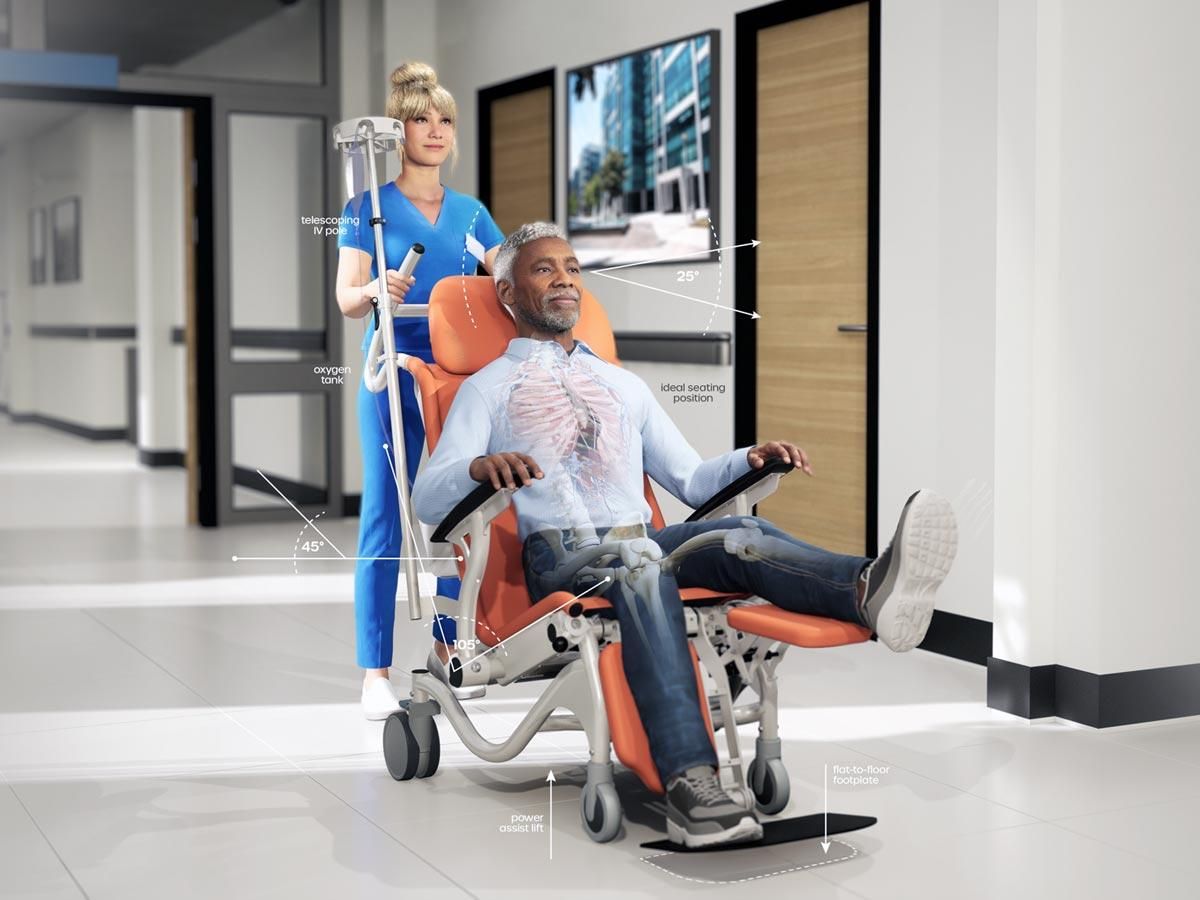
Comfort, Ergonomic and Clinically Relevant Patient Benefits
The Clinically Relevant
Care Continuum Chair™
TPM Research designed the Care Continuum Chair to provide a clinically relevant solution for ideal seated patient transport, easy sit-to-stand dynamics, and early patient mobility.
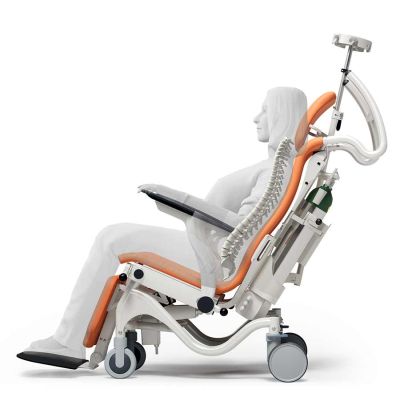
Peer-reviewed clinical and ergonomic research suggest that the Care Continuum Chair’s engineered capabilities can provide a variety of benefits for patients. In addition to providing power-assisted lift functionality and recline for easy sit-to-stand dynamics, the chair was designed to support patients in the ideal Grandjean Seating Angle (GSA) of 105° as well as ideal recline (or elevation) angles.
-
Enables prolonged sitting.
-
Reduces spinal, shoulder and neck related pain.
-
Decreases lower-back pain and spine displacement.
-
Keeps Lumbar Lordosis in an appropriate position.
-
Increases lumbar flexion, and improves lumbar spine and hip angles.
-
Prevents hyperkyphosis and other slouching/hunched upper spine posture issues.
-
Enhances relaxation of the hip flexor muscles, pelvic floor and abdominal muscles.
-
Improves hip joint stability and promotes even distribution of weight.
-
Lessens patient fatigue in long period sitting.
-
Reduces knee as well as upper and lower leg discomfort.
-
Prevents negative effects of the body sliding downward, slumping.
-
Reduces discomfort in the buttocks, coccyx and thighs.
-
Increases circulation, resulting in less physical fatigue and related muscle relaxation.
-
Reduces risk of pressure ulcers due to better weight distribution.
-
Encourages thoracic spine to be held in its natural posture with chest open/expanded.
-
Improves postural alignment as measured by lumbar lordosis and thorax angle.
-
Improves cervical spine support and alignment.
-
Allows relaxed eye-gaze and reduced eye muscle strain.
-
Delivers superior ergonomics and facilitates weight transfer.
-
Assists recovery for orthopedic/cardiovascular surgeries.
-
Delivers better respiratory health positions for pulmonary conditions.
-
Promotes overall positive health and wellness effects.
Better Patient Care for Respiratory, Cardiovascular, Orthopedic and Gastrointestinal Conditions
Clinical research suggests that the proper seating, reclined (elevation) angles with leg and knee support, provided by the Care Continuum Chair could assist patients with conditions such as:
-
chronic obstructive pulmonary disease (COPD),
-
gastroesophageal reflux disease (GERD),
-
COVID-19 recovery,
-
pressure ulcers,
-
hypertension,
-
asthma,
-
osteoarthritis of the spine or hips,
-
hip and total knee arthroplasty (TKA),
-
lower extremity injury recovery,
-
nerve pain in the upper, mid, and lower back.
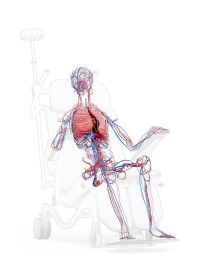
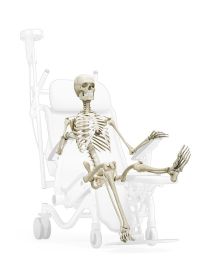
According to published clinical and ergonomic research, the Care Continuum Chair’s design may promote:
-
Improved oxygenation to vital organs.
-
Less cardiovascular pressure and better hemodynamics.
-
Reduced heart strain and lower extremity pressure.
-
Improved and efficient airflow and reduced lung pressure.
-
Relaxation of abdominal, chest and back muscles.
-
Prevention of hyperlordosis and thorasic kyphosis.
-
Proper chest cavity expansion.
-
Overall relaxation and stress reduction.
-
Multi-angle lower extremity support.
-
Better circulation for hips, legs, ankles and feet.
-
Easier mobility, especially sit-to-stand dynamics.
-
Improved patient seating conditions for related ER waiting.
-
Even weight distribution in seated position.
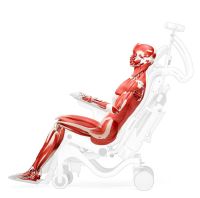
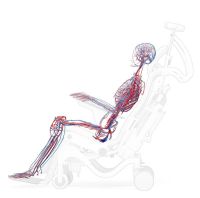
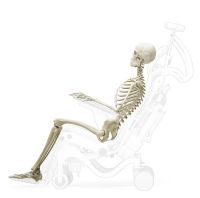
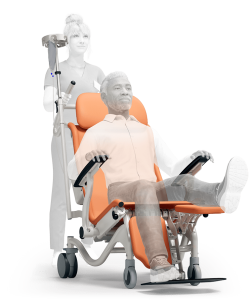
Improved Surgical Recovery
and Accelerated Healing
Research indicates that proper seating, reclining and leg support, like that provided by the Care Continuum Chair, can aid in post-surgery recovery and promote faster healing.
-
Early patient mobility following cardiac surgery has been associated with reduced length of stay in hospital and intensive care unit, improved cardiovascular fitness, decreased morbidity, reduced mortality rate and improved psychological well-being.
-
Occupational therapy interventions to enhance weight bearing through the lower extremity have been found to be effective in improving functional mobility.
-
Transitioning out of bed into supported seating positions shortly after major orthopedic surgery is associated with improved patient outcomes such as decreased pain levels and fatigue, as well as increased independence compared to those who remain in bed rest for extended periods postoperatively.
-
Early rehabilitation strategies following total knee arthroplasty are beneficial for improving pain control, range of motion in the affected joint, physical function scores and patient satisfaction ratings.
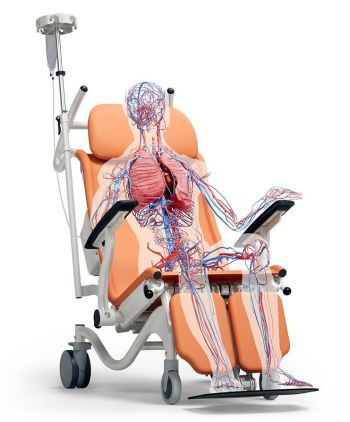
Contact Us to Schedule a Demo
D-040-MK012 Rev. 0 | 5/11/2023
- Ahmed, A., Samin, M., Nasir, M., Qayyum, R., & Waheed, S. (2020). “Mechanical properties of seating cushion materials: a review.” International Journal of Sports Science & Engineering, 14(3), 65–77.
- Ahonen, H., & Tolvanen, M. (2005). “Ergonomic furniture solutions and their effects on productivity.” International Journal of Industrial Ergonomics, 35(10), 855-862.
- Basmajian, J., & De Luca, C. (1985). Muscles Alive: Their Functions Revealed by Electromyography. 6th ed. Baltimore: Williams & Wilkins.
- Borstad, J., et al. (2017). “Effects on Early Transition From Bed Rest To Seated Posture After Major Orthopaedic Surgery: A Randomized Controlled Trial Protocol With Focus On Patient-Reported Outcomes And Safety Monitoring.” BMC Musculoskeletal Disorders, 18(1), 51.
- Brody, L.T. (2012). Posture and Pain: “An Ergonomics Analysis.” Physical Medicine and Rehabilitation Clinics of North America, 23(2), 247-252.
- De Oliveira, B., Souza, G. de, & Gabriel, F. H. F. (2013). “Ergonomic Furniture in the Office Environment: A Review.” Applied Ergonomics, 44(3), 418-425.
- Ferreira, Manuela L., et al. “An Updated Overview of Clinical Guidelines for the Management of Non-Specific Low Back Pain in Primary Care.” European Spine Journal, vol. 25, no. 10, Oct. 2016, pp. 3145–3162.
- Fernandez, L., Bethel, K., Buckley, E., & Rothstein, J. (2015). “The effects of sitting positions on lower limb muscle fatigue.” Clinical Biomechanics, 30(11), 1264–1269.
- Gardiner, K., et al. (2017). “Effects of Zero-Gravity Sitting on Spinal Alignment, Pressure Distribution, and Comfort of Wheelchair Users: A Pilot Study.” American Journal of Occupational Therapy, 72(1), 1-10.
- Harley, J. (2016). “The Efficacy of Recline Positioning for Preventing and Treating Pressure Ulcers in Individuals with Severe Neurologic Impairment: A Systematic Review.” American Journal of Occupational Therapy, 71(1), 7101220020p1-7101220020p10.
- Hutchinson, P., & Penny, K. (2020). “The effect of seating position on mental health, comfort and wellbeing.” Ergonomics, 63(2), 255–269.
- Jones, J., Al-akrad, A., & MacDermid, J. (2017). “Effect of reclined sitting postures on low back pain intensity in healthy adults.” Ergonomics, 60(9), 1160–1170.
- Kuroda, Y., et al. “Development of a Chair to Support Human Standing Motion-Seat movement mechanism using zip chain actuator.” 2022 IEEE/SICE International Symposium on System Integration (SII) January 9-12, 2022. Narvik, Norway.
- Lajoie, F., et al. (2019). “Effectiveness Of An Occupational Therapy Intervention To Enhance Weight Bearing Through The Lower Extremity In Patients Who Underwent Primary Hip Or Knee Arthroplasty: A Randomized Control Trial Protocol.” BMC Musculoskeletal Disorders, 20(1), 408.
- Levy, J., & Ferris, E. (2009). “Granjean seating angle improves posture, comfort, and work performance during extended seating.” Human Factors, 51(4), 566-577.
- Ma, M. P., et al. “Effects of Different Head-of-Bed Angles on Hemodynamics and Oxygenation: A Prospective Randomized Cross-Over Study.” Critical Care Medicine, vol. 42, no. 8, 2014, pp. 1793–1802.
- McLaughlin, A., Daly, M., & McGarry, M. (2009). “The effect of a Granjean seating angle on seating comfort.” Applied Ergonomics, 40(4), 733-737.
- McNicholas, C., et al. (2014). “Recliner Chairs Improve Quality of Life for Wheelchair Users.” Physical Therapy, 94(4), 495-504.
- O’Connor, M., et al. (2013). “Early Mobilization Following Total Hip Replacement Surgery Is Associated With Improved Outcomes at 6 Weeks: Results From a Prospective Cohort Study Using the Oxford Hip Score as an Outcome Measurement Tool”. Clinical Rehabilitation, 27(2), 135-143.
- Ozcakar, L., et al. (2015). “Early Rehabilitation Strategies After Total Knee Arthroplasty: A Systematic Review and Meta-Analysis of Randomized Clinical Trials.” Archives Of Physical Medicine And Rehabilitation, 96(11), 2072-2081.
- Peper, E., Lin, I. M., Gibney, K. H., & Murata, G. M. (2017). “Occupational health benefits of ergonomic furniture.” Frontiers in Psychology, 8, 1774.
- Shia, V., et al. “Stability Basin Estimates Fall Risk from Observed Kinematics, Demonstrated on the Sit-to-Stand Task.” Journal of Biomechanics, vol. 72, 2018, pp. 37–45.
- Rajaram, S., et al. (2015). “The Effects of Postoperative Seating on Pain and Quality of Life After Total Knee Arthroplasty: A Randomized Controlled Trial.” Journal of Orthopaedic & Sports Physical Therapy, 45(10), 803-810.
- Rothman, S., Laury, A., Shirazi, A., Daeschner, E., & Scharff, L. (2021). “Ergonomic Posture in Seating Angles: Effects on Comfort, Joints, and Muscles.” International Journal of Ergonomics, 2021.
- Tulipanova, M. (2015). “The Granjean Seating Angle: A Modern Ergonomic Tool.” International Journal of Occupational Safety and Ergonomics, 21(3), 454-465.
- Wang, C.-Y., et al. (2008). “Effects Of Early Patient Mobility On Recovery After Cardiac Surgery A Systematic Review And Meta-Analysis Of Randomised Controlled Trials.” Critical Care, 12(4), R86.